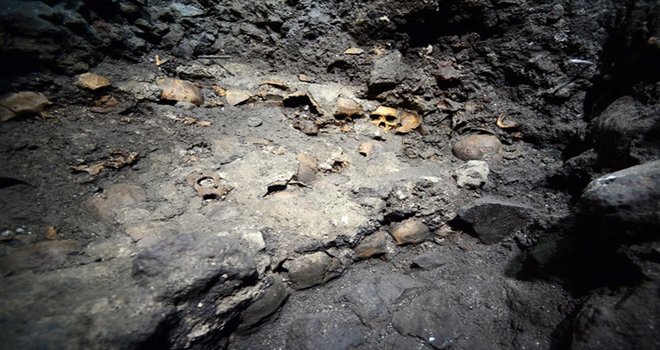Mexico Finds Main Skull Rack at Aztec Temple Complex
This was a rack on which the skulls of sacrificed people were arranged on wooden poles and displayed to inspire fear and awe.
The victims were mostly young men, but archaeologists also spotted women and children.
The find, which was unearthed in the heart of Mexico City, the capital of Mexico, is thought to be able to shed new light on how Aztec rulers projected power by human sacrifice.
Archaeologists believe that the skulls belonged to Huey Tzompantli, the Great Tzompantli of Tenochtitlan.
So far, 35 skulls have been found on the 112-foot-long, 40-foot-wide rack.
Eduardo Matos, an archaeologist at the National Institute of Anthropology and History (NIAH), suggested the skulls were put on display to intimidate anyone who might visit the city, friend or foe. However institute archaeologists stated the most recent discovery was totally different.
To make the scene even more horrifying, the new finding revealed that part of the platform where the head rack once stood was made of rows of skulls mortared together in a circle. All of the skulls have been organized to look inward towards the middle of the circle, however specialists do not know what was on the middle.
The rack of skulls was found on the western side of what was once the Templo Mayor complex in Tenochtitlan, in modern Mexico City.
The platform was partly excavated underneath the ground of a three-story colonial period home. For years, archaeologists believed a ceremonial site was located there, based on Spanish descriptions of the Aztec temple. It is interesting to note that the temple was built for the first time about 1325 and was then rebuilt six times after that. “With more study, we expect to learn that many of these skulls belong to (Aztec) enemies, who were captured, sacrificed and decapitated in order to be displayed there”.
The Tzompantli was built in a construction stage at the end of the 15 century or at the very beginning of the 16 century. “This find both confirms long-held suspicions about the sacrificial landscape of the ceremonial precinct, that there must have been a much bigger tzompantli to curate the many heads of sacrificial victims” as a kind of public record or accounting of sacrifices.








